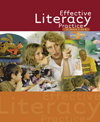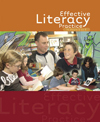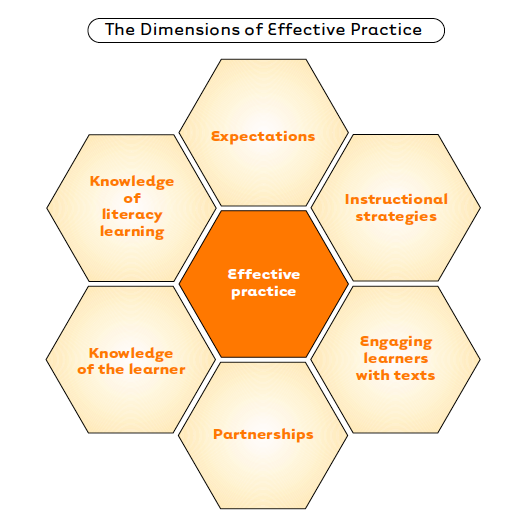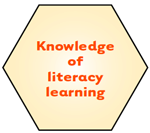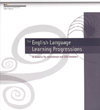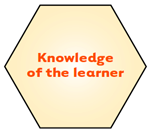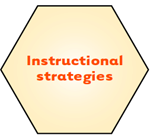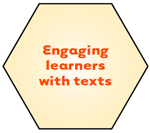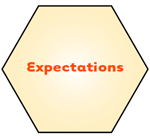Effective literacy practice (archived)
The Ministry of Education handbooks Effective Literacy Practice in Years 1 to 4 and Effective Literacy Practice in Years 5 to 8 set out six dimensions of effective literacy practice, which have been identified in both New Zealand and international studies.
This section outlines some of the key links between the dimensions of effective practice and the reading and writing standards.
If you cannot view or read this diagram, select this link to open a text version >>
Knowledge of literacy learning
Each of the reading and writing standards is accompanied by one or more illustrations, which show the kinds of texts that students need to be able to read or write to meet the demands of the curriculum at that level. By considering these illustrations in the light of the detailed information in the Literacy Learning Progressions and the Effective Literacy Practice handbooks, teachers gain a deeper understanding of the ways in which literacy learning develops over time.
The English Language Learning Progressions (ELLP, Ministry of Education, 2008) booklets give comprehensive guidance about the development of literacy in English for the widely varying groups of English language learners in New Zealand schools.
Knowledge of the learner
Knowledge of the learner encompasses knowing about the pathway of progress for each child and about the patterns of progress for literacy learners in general at different points in their development.
Ministry of Education, 2003, page 13
It is essential that the teacher respects and values each learner for who they are, where they come from, and what they bring with them. Students bring their lived experiences – their culture, language, and identity – with them. Ka Hikitia focuses on 'Māori enjoying education success as Māori' (Ministry of Education, 2009, page 18). The strategy emphasises ako as the basis for teaching and learning relationships in which educators also learn from students and in which teaching practice is deliberate, reflective, and informed by the latest research.
Integrating an understanding of cultural identity into learning settings is most effective when it contributes directly, deliberately, and appropriately to shaping teaching practices and learning experiences for students. Ako involves Māori students, parents, families, whānau, iwi, and educators developing learning partnerships in which knowledge and expertise are shared to produce better outcomes for all.
The students in New Zealand schools have diverse backgrounds. For all students, research evidence shows a clear association between positive outcomes and a detailed knowledge of students, based on quality assessment data. The introduction of the National Standards will support teachers as they continue to use assessment to guide instruction (rather than as an end point).
[This shift is a] change from [the] traditional idea where assessment data was considered to reflect students’ abilities, about which little can be done, to one where assessment data is considered to be information to guide effective teaching.
Timperley, 2009, page 6
Note: the development of the National Standards has identified a need for further, culturally inclusive support materials for the standards. Work is under way to address this need.
Students who face particular challenges in literacy learning
A small number of students face particular challenges in literacy learning. Early identification of students who need more focused teaching, or additional support, to meet the standards will allow schools, teachers, and the education system to make deliberate decisions about how to improve these students’ learning and how to provide additional support where appropriate. For example:
Dyslexia is a term used to describe a range of persistent difficulties with aspects of reading, writing and spelling. It may assist with understanding why some students do not make expected progress in these areas despite the teaching and extra support that would be helpful for most other students. By working with the strengths of students, difficulties associated with dyslexia can be reduced …
Ministry of Education, 2008, page 2
Due to significant cognitive impairments, a very small number of students work to individual education plans (IEPs) that are developed in consultation with the students’ parents, families, and whānau; the students’ teachers; and the Ministry of Education. The achievement and progress of these students will be assessed in relation to the standards, as part of their IEPs. Boards will continue to report on these students separately in their annual reports.
Instructional strategies
The illustrations that accompany each standard explain where the complexity and challenge lie within examples of texts and tasks. By using the standards along with the Literacy Learning Progressions, the English Language Learning Progressions, and what they know about their students, teachers can pinpoint key focus points for instruction. Chapter 4 of both Effective Literacy Practice handbooks describes and explains a variety of evidence-based instructional strategies and approaches that effective teachers use in their teaching practice.
Engaging learners with texts
The progression of the reading and writing standards reflects the increasing variety and range of texts that students are expected to read and write as they move up through the curriculum. At each year level, the key characteristics of texts and the text or texts used to illustrate each standard indicate the variety and range.
Further examples of texts used for specific purposes at particular levels will be provided online, because it is critical that teachers (and students) think carefully about why they select particular texts to use. Teachers need to choose tasks and texts that will reflect their students’ lived experiences and support their development of literacy as they develop the knowledge and understandings required in the various areas of the New Zealand Curriculum.
The Ministry of Education’s instructional reading series Ready to Read, the Junior Journal, and the School Journal provide a broad and sound base for reading instruction in years 1–8. However, from the time they enter school (and before that), students have the capacity to understand and learn from far more complex texts than those they can read themselves. At all levels, teachers can engage students with texts that have appropriate curriculum content by reading to them.
Expectations
The National Standards make explicit the levels of reading and writing expertise that students are expected to reach. They are high but attainable standards based on consistent expectations for learning. The standards will enable students, as well as their teachers, families, and whānau, to develop a better understanding of the kinds of reading and writing that are required at each step of their learning pathway.
This understanding will help students to become active and autonomous as they engage with texts. They will know what is required, and so they will be able to select and use texts to meet their own strengths, interests, and learning needs. Knowing what is required empowers students to make connections between what they already know and what they need to do in order to continue making progress.
Higher expectations cannot be taught or imposed independently of context. Rather, they develop as new teaching approaches are mastered and student learning is seen to improve.
Timperley, Wilson, Barrar, and Fung, 2007, Summary of Findings, page 30
Evidence shows that New Zealand’s within-school disparities in student achievement are far greater than those of many other countries. Low expectations based on ethnicity or socioeconomic status can contribute to these disparities (Harker, 2007; Robinson, Hohepa, and Lloyd, 2009). The national reading and writing standards will be used to ensure that teachers, parents, families, whānau, and students set high expectations for all students and work towards them together.
Partnerships
Research (Alton-Lee, 2003) shows that student outcomes are enhanced when there are effective links between school and the various other contexts in which students are socialised. One of the most powerful ways to promote learning is to help students connect their school work with their experiences in their own families, whānau, cultures, and communities so that they can build on their related knowledge and skills (Robinson, Hohepa, and Lloyd, 2009).
By reporting to parents, families, and whānau in plain language and building shared expectations with them, schools can create connections between home and school that make a real difference to students’ achievement.
Published on: 19 Oct 2009
Return to top

